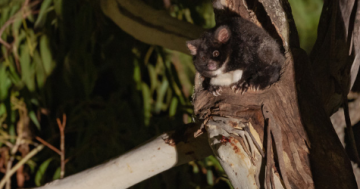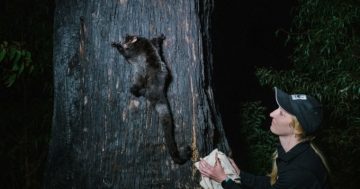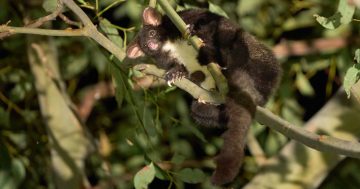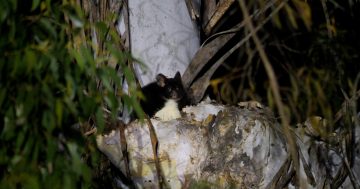
This greater glider was apparently sighted in Flat Rock State Forest on 26 January. Photo: South East Forest Rescue.
After a matter of weeks, the state’s environmental regulator has backtracked after initially removing a rule to do with the protection of greater gliders, but conservationists still claim the current plans are not enough to save these endangered animals.
On 2 February, the NSW Environment Protection Authority (EPA) announced it would remove the requirement for Forestry Corporation of NSW (FCNSW) to search for greater glider den trees, before reintroducing this requirement on 16 February, WWF-Australia said.
“The watchdog hit pause on these new rules following an outcry from greater glider experts, who said they were not consulted,” a WWF-Australia spokesperson said.
The EPA announced other methods to protect the species on 2 February, including a 50-metre exclusion zone around recorded locations of dens and the protection of extra greater glider trees in addition to existing hollow bearing and giant tree requirements.
On 16 February, it said FCNSW would be required to undertake nocturnal surveys for the glider dens.
Afterwards, WWF-Australia threatened species and climate adaptation ecologist Dr Kita Ashman said the state was “basically back at square one with protections for greater gliders”.
“The EPA is righting a wrong that should never have happened in the first place,” she said.
“Reinstating the requirement to survey for gliders is a good thing, but these surveys need to be done by independent, qualified ecologists and not by Forestry Corp.
“Ultimately, the only way to secure a future for greater gliders is to get out of native forest logging and into sustainable plantations. Gliders are not going to persist in areas that are being logged.”
A spokesperson for South East Forest Rescue (SEFR) claimed the new rules would require Forestry staff to walk or drive along a few kilometres of road over two nights using spotlights to identify den trees.
They claimed the area to be searched would equate to, at best, 10 per cent of the logging area and the method would only find a fraction of the den trees that were needed for the species’ survival.
“Unfortunately the EPA seems to think that gliders all live next to a road,” SEFR’s Scott Daines said.
“It appears the EPA is going to capitulate to Forestry again, at the expense of the endangered species they are meant to be protecting.
“We are extremely disappointed with this decision and [it] shows they have not learnt from the debacle of two weeks ago.”
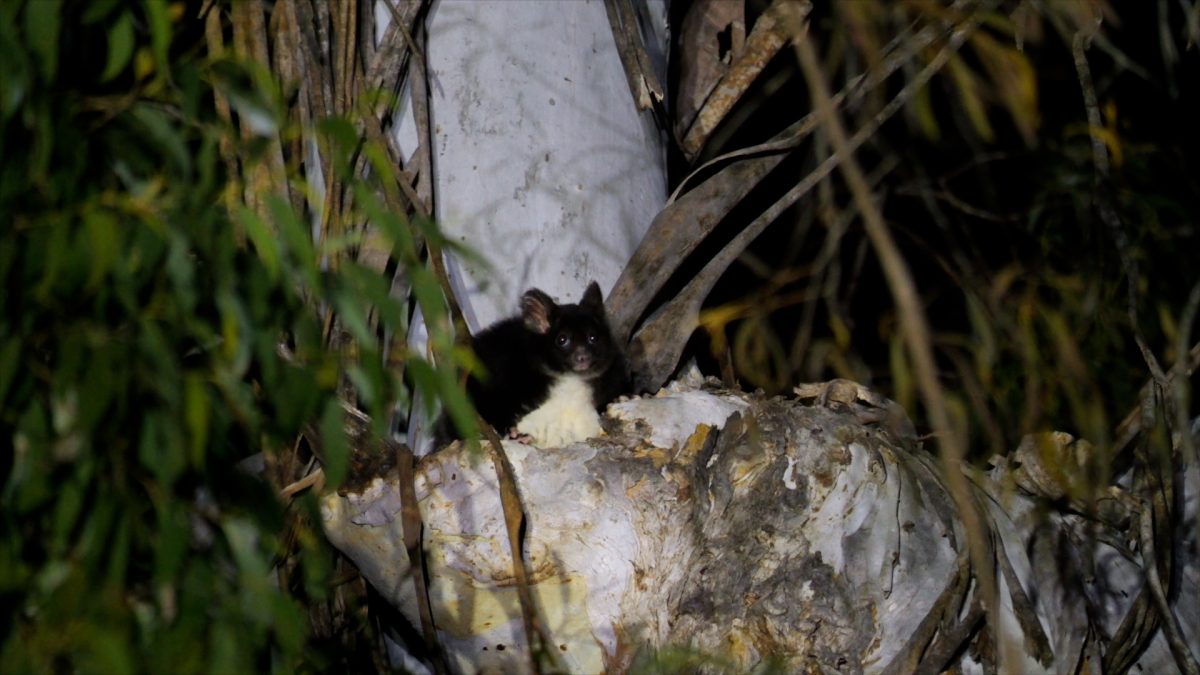
This greater glider was filmed in hollows in den trees identified by conservationists. Photo: WWF-Australia.
In response to questions, an EPA spokesperson said the finalised Coastal Integrated Forestry Operations Approvals changes, which came into effect on 16 February, reflected the changes announced on 2 February regarding new tree retention requirements, with an additional requirement of conducting nocturnal surveys.
“The EPA met with several scientists and environment groups to understand their concerns and the conservation needs of the species,” the spokesperson said.
“We believe the requirement for nocturnal surveys will play a complementary role along with the new tree retention changes to achieve long-term protection for the endangered species, while giving industry certainty.
“We will monitor the implementation of the new rules to determine if they are working as intended and may consider further improvements if required.”
A FCNSW spokesperson said it had always been Forestry Corporation’s desire to operate in line with regulations which found the right balance between conservation in state forests and active management for renewable timber production for the community.
“These measures will assess southern greater glider occupancy and distribution, augment protections for southern greater gliders and provide clarity for operations moving forward,” the spokesperson said.
“Forestry Corporation will work with the EPA to implement the new measures.”
The debate over the protection of greater gliders in South East NSW came to a head in 2023, when the EPA ordered FCNSW to halt operations in parts of Tallaganda State Forest that August, after officers inspected several active logging areas of the forest and found a dead glider near harvest operations.
The order was extended until 13 November, but that deadline shifted yet again for another 40 days to 20 December.
In the meantime, activists called for urgent reforms after 89 endangered greater gliders and 20 habitat trees were found in areas of the forest that had been earmarked for logging.







